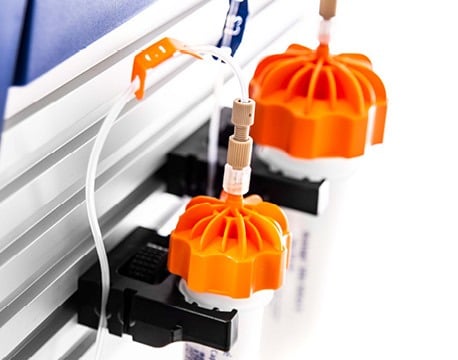
What do I do if a 2-solvent gradient will not separate my sample?
Small Molecules and Synthetic Therapeutics
This post discusses options to address the issue of a 2-solvent gradient not separating a samples components.

Small Molecules and Synthetic Therapeutics
This post discusses options to address the issue of a 2-solvent gradient not separating a samples components.

Small Molecules and Synthetic Therapeutics
This post shows how using a fiber optic UV detector enhances sensitivity for poor UV absorbing compounds.

Small Molecules and Synthetic Therapeutics
This post describes some beneficial techniques for modifying flash chromatography methods to separate chemically similar compounds.

Small Molecules and Synthetic Therapeutics
This post discusses the benefits possible by increasing normal-phase solvent pH.

Small Molecules and Synthetic Therapeutics
This post describes how to remove an interfering TIC or Total Ion Current background response.

Small Molecules and Synthetic Therapeutics
This post discusses how and when to insert a gradient hold.

Small Molecules and Synthetic Therapeutics
This post discusses the importance of using TLC plates with silica that matches that of the flash chromatography column.

Small Molecules and Synthetic Therapeutics
This post describes how the choice of a reaction solvent can influence its outcome.

Small Molecules and Synthetic Therapeutics
This post discusses the benefits provided by PDA-UV detector for determining peak purity.

Small Molecules and Synthetic Therapeutics
This post discusses the reversed-phase purification of highly lipohilic compounds using high organic content mobile phases.